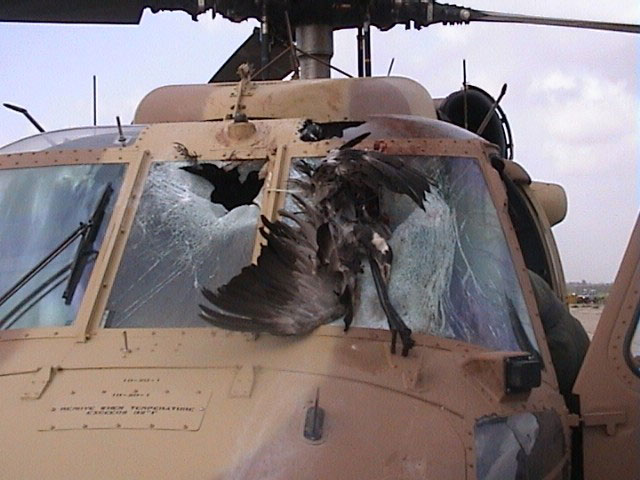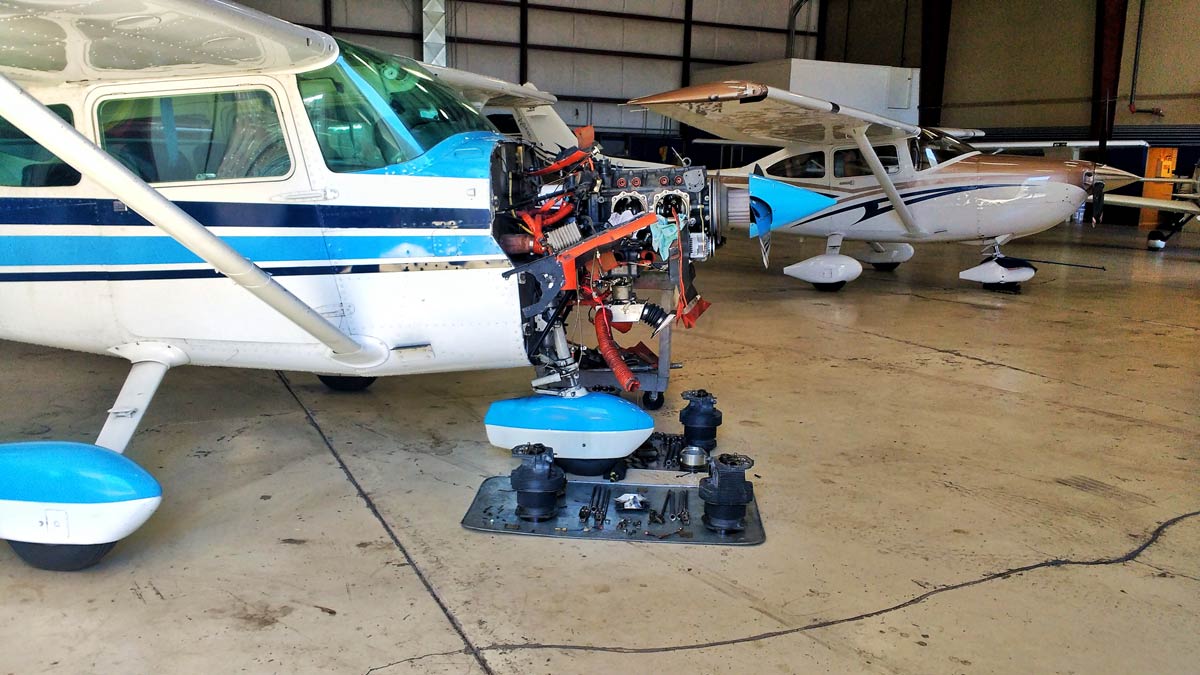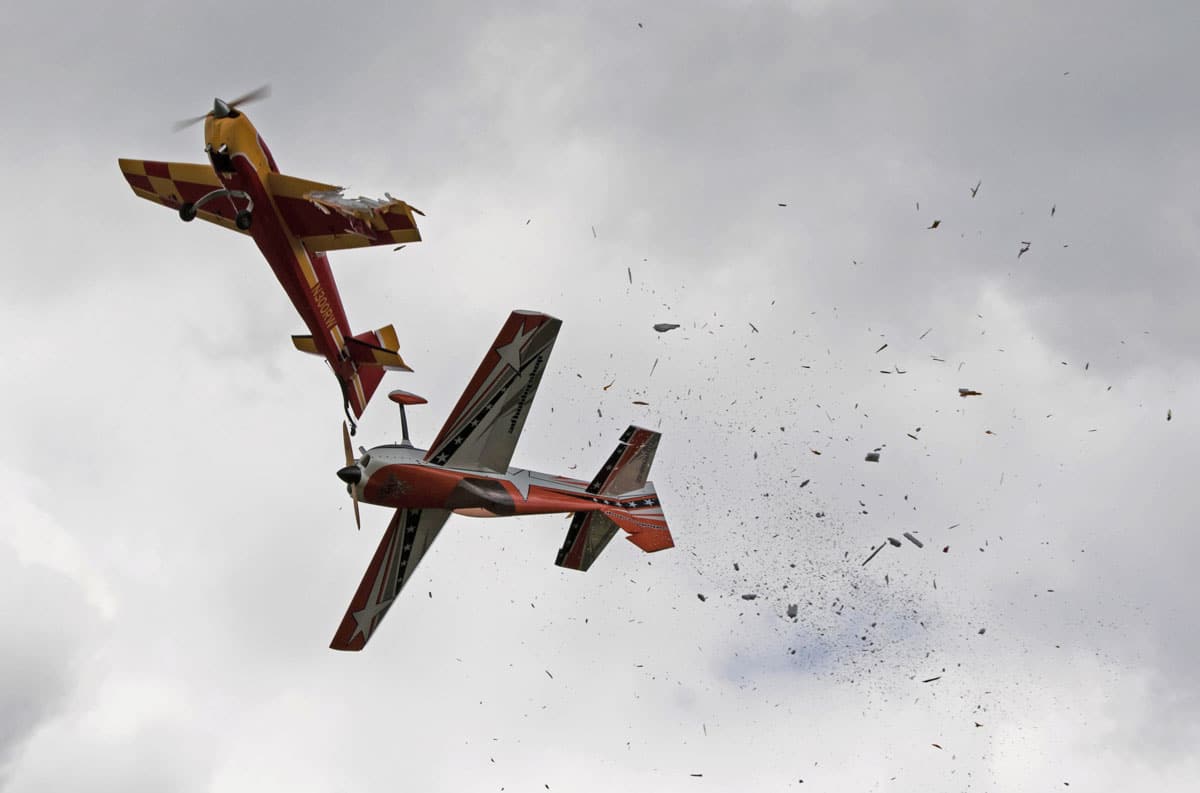Birds and Planes Don’t Mix
My scariest bird strike (yes I’ve had a few) was probably back in 2008. I was on final approach to Bagram Airbase, Afghanistan in an F-15E during sunrise. A kite (the giant bird of prey, not the harmless toy) found the left engine and immediately tore up every stage of the turbine. It smelled like burnt chicken. We stopped on the runway, shutdown, opened the canopy, and started running away from the smoking jet loaded with fuel and bombs. Well, about 25 yards into the dirt infield, I remembered from the inbrief that this dirt area had not yet been cleared of landmines from the days of the Russian occupation. Oops! I carefully retraced my steps back to the runway; the engine was a total loss amounting to a few million dollars.
Perhaps the most famous bird strike in recent years was when US Airways Flight 1549 out of LaGuardia hit a flock of Canadian geese on departure. Captain “Sully” Sullenberger, after losing all power, calmly turned the jet towards the Hudson River and made a water landing, saving the lives of everyone on board.
Now, you’re probably not dealing with landmines or hundreds of passengers every time you step into the cockpit, but that doesn’t devalue the threat that birds can pose to you and your aircraft.
There were a record 13,244 bird strikes reported in 2014, with 581 causing significant damage (FAA). The actual numbers are undoubtedly higher – you may hit a bird in the air and not even notice, then on postflight note nothing but bug splatter on the leading edges of your wings, some of which might be bird blood.
The Many Ways a Bird Strike Can Ruin Your Day
A bird as small as a starling can cause some major damage to your aircraft.
An engine loss may seem terrible, but considering some of the other ways a bird can damage an aircraft, an engine loss is very manageable assuming you’re always on point with your emergency procedures (and have a suitable landing area). Birds can get ingested into air intakes or damage propellers, throwing them off balance. This is the most common damage from bird strikes.
Damage to a flight control surface is more serious. If a bird hits your elevator, for example, you could have some serious difficulty controlling pitch. It’ll be sluggish, erratic, and make for a sporty landing.

A canopy breach is perhaps the most serious type of bird strike, because it can completely incapacitate you as a pilot. I can’t think of anything worse than being blinded by bird parts hitting my eyes, yet completely able to control the aircraft with no visual references. This is, thankfully, very rare.
Avoiding Birds Starts in Preflight
Ornithologists have been studying birds for centuries. Thanks to them, we are now able to fairly reliably predict bird patterns, which you can use during your preflight planning. Here are some things to consider for flight planning:
- You should also be familiar with bird migration patterns in your local flying area (usually occurs in the fall). Use this information for risk management in seasonal flying. How would you go about learning this? Your airport manager is a valuable resource that you should utilize. They’ll have information on local migration patterns and statistics about bird strikes at or near the airport. Don’t stay grounded during migration season, but be extra vigilant.
- Birds love to be around water. If your local airport has a body of water nearby, even a small one, try to avoid flying over it if you can. If you can’t, use the previously mentioned ways to mitigate this risk. This applies to your enroute flight planning and flying as well. No buzzing the bird ponds!
- There’s nifty tools on the Internet called BAM and AHAS, which the FAA provides a little information on and links to here. These are the Air Force’s Bird Avoidance Model and Avian Hazard Advisory System. You can learn about the prediction methods that these models use on the website, but I’ll just point out here that it’s not bird avoidance gospel. It’s a statistical model with it’s own flaws – it’s not the be-all-end-all for your flight planning, but just another tool to have in the bag.
Encountering a Bird Strike in the Air
Most bird strikes occur during the landing phase of flight and below 500 feet.

You should always be attentively scanning the air like you learned back in the days of your private pilot training. If you see a bird, it’ll probably be in your peripheral vision where movement is best detected. You won’t have a lot of time to figure out if it’s a threat or not. The basic rule is to look for ‘line-of-sight’, which is a way of saying ‘movement’.
Is the bird moving across your canopy? If so, it probably won’t hit you (unless it’s really, really, really close!). But if the bird is stationary on your canopy, it’s staying in the same relative position and probably getting bigger, it’s on a collision course and you’ll need to take evasive action.
A common misconception is that birds dive when approaching aircraft. This is not true, they are in fact very unpredictable. The best you can do is maneuver away from the bird and keep your senses high for any noises or vibrations that a strike might cause.
Is it too late? Did you and the bird occupy the same piece of sky momentarily? The most important thing to remember is to never stop flying the aircraft! Many pilots have been killed for giving up on a perfectly flyable aircraft. Okay, maybe not perfectly flyable, but recoverable. All you need to do is get back to terra firma no matter what it takes. Considering most strikes occur during landing, you should continue the landing and get back on the ground.
 Do a flight control check. Are your ailerons working? What about your rudder? And elevator? You’re still flying? Okay, great! Or maybe you can’t turn to the right – it looks like you’ll have to plan your approach for all left-hand turns. Now slow down. Slow down to your approach speed and note any changes in flight control characteristics. If the aircraft shows any sign of becoming uncontrollable while you’re slowing down, note that airspeed and do not go below it, especially during landing. You may have to make a hot landing, but no one will be judging your landing after you’ve suffered a bird strike.
Do a flight control check. Are your ailerons working? What about your rudder? And elevator? You’re still flying? Okay, great! Or maybe you can’t turn to the right – it looks like you’ll have to plan your approach for all left-hand turns. Now slow down. Slow down to your approach speed and note any changes in flight control characteristics. If the aircraft shows any sign of becoming uncontrollable while you’re slowing down, note that airspeed and do not go below it, especially during landing. You may have to make a hot landing, but no one will be judging your landing after you’ve suffered a bird strike.
Of course, if you lose power, there will be no time for this. Turn towards a suitable landing area and start your engine failure procedures.
All bird strikes should be reported to the FAA, or at least your airport manager. All of this information goes into databases that serve to make flying safer.
Wrapping It Up
Aviation should be fun. Part of enjoying aviation is recognizing the inherent dangers of flying and doing what it takes to minimize these risks. Being able to safely share the skies with our feathered friends will keep it safe and fun for both us and them!
The FAA has a large wildlife strike database at //wildlife.faa.gov/. Take some time to read some of the information available at the website. You’ll definitely learn a lot about flying around birds, and how to limit potential bird strikes!















Leave a Reply